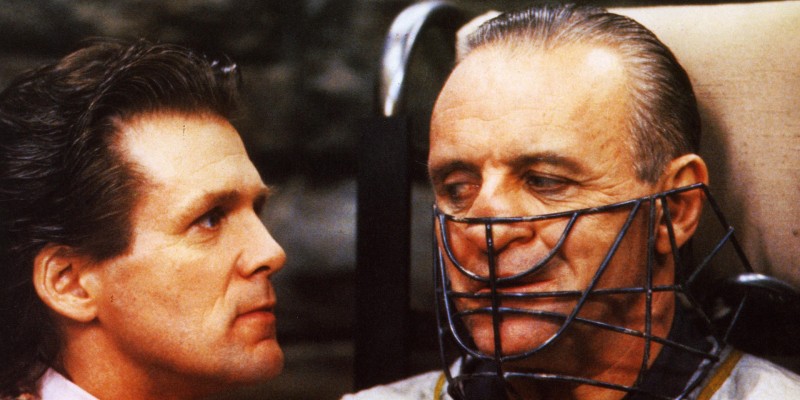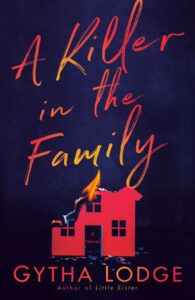No serial killer fiction list would be complete without mentioning Red Dragon. Hannibal Lecter probably needs to introduction, but remains the model for the devilishly smart and manipulative psychopath. Of course, Harris gives us not one, but two serial killers within the book’s pages, and “The Tooth Fairy” is a very different kind of killer: one who is troubled, and unstable, and almost finds himself drawn to be kind when he falls in love. It’s a great portrait of the different types of killer, and of how trickery nearly undoes investigator Jack Graham.
The Bone Collector has to go on any serial killer reading list too. Jeffrey Deaver’s gripping tale of a quadriplegic investigator teaming up with a rookie cop to bring a serial killer to justice grabbed me right from the start. It’s got all the best cat-and-mouse elements of a serial killer chase, and better still, has a real kick-in-the-teeth feeling of the serial killer being four steps ahead without it being a huge cheat.
Moving to UK shores, and specifically Scotland, I’m a huge fan of Ian Rankin’s Black and Blue, in which a serial killer on the loose has disturbing similarities to real-life uncaught killer Bible John. The sense of brooding threat behind the killer’s actions are brilliant, and the pace relentless as Rebus tries to get into his mind and predict what will happen next.
In stark contrast to this vision of serial killers as supremely clever, skilful evaders of justice is Catherine Ryan Howard’s brilliant The Nothing Man. For me, this superb tale – told from the alternating perspectives of the woman who is on the serial killer’s tail and the killer himself – is one of the most brilliant revelations of the reality of most killers: that they are not demi-gods, or supremely clever. They’re often men who feel inadequate, like they are nothing, and want to take back power.
The Unsolved Cases
With almost half of murders in the US remaining unsolved, it’s little wonder that there are serial killers who have long evaded justice. Those serial killers retain a particular place in public consciousness, and there are books that delve brilliantly into the long-lasting effects of this on those who lost, and on those living in the killer’s shadow.
Michelle McNamara’s I’ll Be Gone in the Dark is an extraordinary account of the effects of obsession on those who become caught up in trying to find a killer. It is beautifully captured pushes back against the neat endings we find in Hollywood. And ever present in the book is a meticulous in its attention to the victims. They are all of them real, vibrant humans. People to mourn.
Even though the Golden State Killer (the name McNamara gave him) was ultimately found, he was identified only after McNamara’s death and the book’s posthumous publication. So this book stands as a great unsolved serial killer title.
Zodiac, Robert Graysmith’s account of the North Californian Zodiac killer, who preyed on at least five victims and claimed to have killed 37. Unlike the Golden State Killer, who seemed intent on getting away with his crimes, the Zodiac clearly enjoyed the sense of power that writing to the press gave him.
Perhaps the most interesting side to Graysmith’s story is, like McNamara’s, the way he becomes drawn obsessively into an attempt to solve the case. A political cartoonist for the San Francisco Chronicle, he worked for the paper that the killer chose to write to. It was this connection that drew him in, and his liking for puzzle solving that hooked him.
It is fascinating to note that the chief suspect of both Graysmith and the investigating officers was ruled out by DNA later on, and that only a few months ago a press release stated that there was strong evidence that another man was in fact the Zodiac killer. I can’t help but feel a surge of hope at the idea that all such unsolved crimes will eventually be pinned down by advances in DNA testing.
I wonder whether the same might one day happen for James Ellroy, whose mother was murdered when he was ten. Those events and the urge, as an adult, to try to solve the crime were the inspiration for his My Dark Places, Ellroy’s brilliant and moving account of his pursuit of her killer.
The Tireless Investigators
As a follow-on to the unsolved books, I thoroughly recommend diving into Paul Holes’ brilliant Unmasked, his own account of the Golden State Killer investigation. Though less piercing in its psychology, the process of investigation is fascinating, and the eventual unmasking of Joseph James DeAngelo through forensic genealogy is absolutely fascinating to read about.
And for those interested in reading a book with both a British slant and some genetic brilliance, I recommend The Blooding by Joseph Wambaugh. It’s a fascinating account of how the hunt for a killer produced the first conviction via DNA testing. It’s brilliantly characterised, and the dead ends and frustrations only add to the sense of light at the end of the tunnel.
The Gangland Killers
Although solitary serial killers hold a huge place in our minds when we think of those who have murdered many, there are a number of undoubted psychopaths who have operated within various mob settings who have killed frightening numbers of people over the years.
I recently dived into Murder Machine, an account of the gang set up in Brooklyn by Roy DeMeo under the oversight of the Lucchese crime family. DeMeo was, by all accounts, violent and vengeful, and was directly responsible for the murders of over 200 people. The book by Gene Mustain and Jerry Capeci was primarily researched through interviews with one of the peripheral DeMeo gang associates, a man named Dominick Montiglio who was the nephew of a key player and ultimately sought to get himself out. Though perhaps a little biased as a result, the account is nonetheless a fascinating insight into how a man changes from an ambitious young boy into a violent psychopath – and then meets his end through equally brutal means.
*


















